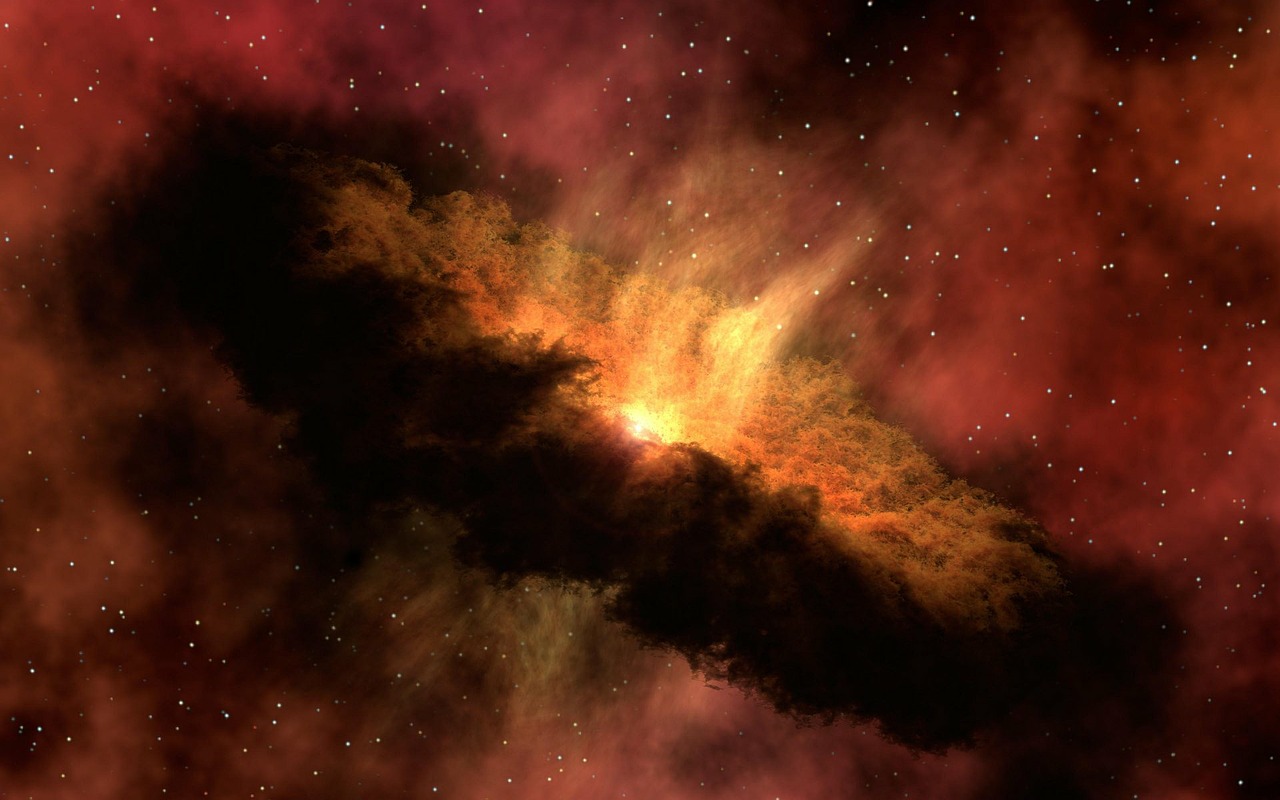
In a new study reported in arXiv, researchers claim they have found evidence of past universes that existed before our own. The study reports the apparent observation of “Hawking points”— anomalous massive points of energy superimposed upon the cosmic microwave background radiation.
It is believed that these Hawking points are the electromagnetic remnants of supermassive black holes that evaporated in a universe that existed before the Big Bang.
The name Hawking point is a reference to the late great physicist Stephen Hawking who was famous for his work on black holes. Hawking theorized that black holes emit large quantities of radiation, known as Hawking radiation. It is this Hawking radiation emitted from black holes that the researchers believe could survive the transition from one universe to the next. The Hawking radiation from black holes could, the researchers argue, manifest as the observed Hawking points. In other words, the observed Hawking points could be a sort of smoking gun—the remains of a universe that existed before the Big Bang.
Conformal Cyclical Cosmology
The concept of “before the Big Bang” might initially sound paradoxical. After all, it is received common knowledge that time itself began at the big bang. How could something exist at a point in time before the existence of time itself?
An answer to this particular philosophical conundrum is a theory known as conformal cyclical cosmology (CCC). First introduced by English mathematician/physicist/philosopher Sir Roger Penrose in 2005, CCC is the view that the universe goes through cycles (aeons) of expansion. each starting with its own Big Bang and coming to a stage of indefinite (infinite) accelerated expansion. Our observed universe is just one of these aeons, but infinitely more have existed in the past, and infinitely more will exist in the future.
Interestingly, under this theoretical model, there is no stage of universal contraction (“Big Crunch”); that is, there is no point where the entire universe collapses in on itself back into a singularity. Instead, eventually each universe in a sense “forgets” how big it is, and becomes physically identical to the Big Bang of another universe. In more mathematical terms, at the crossover point between one universe and the next, the metrical structure of spacetime is multiplied by a conformal factor Ω that tends towards zero as time tends towards infinity. The result is that the spacetime boundary between the two universes is “squished” down to a regular conformal hypersurface. The resulting hypersurface is interpreted as a new universe, with a different solution to Einstein’s field equations.
In other words, instead of viewing the universe as some sort of cosmic balloon that periodically inflates and contracts like some theories of cosmology hold, CCC describes the universe more like a series of Russian nesting dolls that expands infinitely upward, where the “very large” of the previous universe becomes the “very small” for the next universe.
The Study
A consequence of the CCC model is that fermions, the fundamental particles that compose ordinary everyday baryonic matter, are unable to cross the boundary separating one aeon from the next. However, the model predicts that bosons, another kind of elementary particle that includes photons, gluons, and the recently discovered Higgs boson, would be able to cross this boundary relatively unscathed.
In particular, the CCC model predicts that Hawking radiation leaked from supermassive black holes can cross the spacetime boundary between aeons and would appear to us as circles of radiation centered around a single extremely concentrated point of energy on the cosmic microwave background radiation, also known as B-modes. The existence of B-modes is one of the lingering mysteries of current cosmology It has been theorized that the existence of B-modes is due to gravitational waves, but Penrose and his team argue that B-modes could be a result of the release of electromagnetic radiation from a galactic core supermassive black hole in a previous aeon.
In fact, the predicted energy profile that would arise from such an event has actually been found by the BICEP 2 team while making a map of the cosmic microwave background radiation. The CCC model predicts the exact energy pattern observed by the BICEP 2 team, and Penrose takes this successful prediction as confirmation for his theory. According to Penrose, “it was remarkable to find the actual presence of B2 among our anomalous points, this appearing to provide some unexpected additional support for CCC.
Although exciting news, it is clear that the conclusions of the study have their limitations. Noticeably, the CCC model does not include a period of rapid cosmic inflation, Cosmic inflation is a key part of the current Standard Model of spacetime, thought to be necessary to explain the distribution of matter and energy in the observed universe. It is still unclear how exactly the team can account for the observed evidence for cosmic inflation, but Penrose is optimistic. stating “the roles for which inflation has importance in conventional cosmology being taken over by the Λ-driven exponential (self-similar) expansion of the previous aeon.”
In addition, the team interprets the B-modes as being the result of Hawking radiation, though we still have yet to find any direct evidence for the existence of Hawking radiation. No doubt CCC paints an intriguing mathematically consistent theory of the nature of the universe, but it seems that there is still a lot of evidence that needs to be gathered before researchers can say anything conclusive.
Alternatively, some may have issues with the CCC model on more conceptual grounds, arguing that speaking of what occurred before the Big Bang is misguided. For some scientists, the Big Bang represents a kind of absolute limit on scientific observation, beyond which nothing meaningful can be said. While mathematical models of CCC may paint an interesting picture, they are speculative in nature and no real conclusions can be drawn from them.









